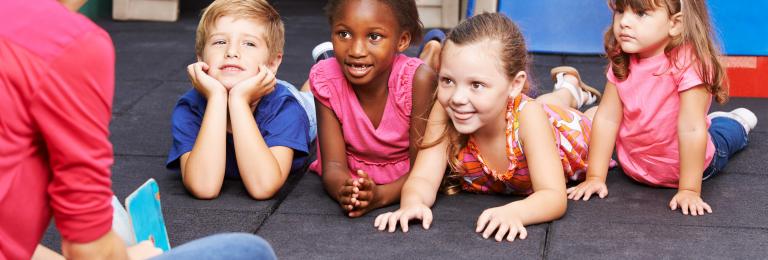Where Are You?
Age
3-5 years
Child Development
Well-being and belonging (physical activity); Language & literacy (vocabulary development)
Equipment
None
Physical Activity
This activity aims to build the fundamental movement skills of locomotion (running) and coordination (jumping, crawling, hopping, skipping, galloping).
How to Play
- The Leader stands on the opposite side of the room or space from the children. Cue the children to ask, “Where are you?”
- Respond with “I am in Germany” (for an example). Use different places around the world or local town each round.
- The children then repeat where you said you were. “Germany!” They then say, “How do we get there”?
- Respond with a mode of transportation. For example, you can say you traveled there in an airplane, rode on a motorcycle, in a bus or a submarine, train, swam etc.
- The children do that action to cross the room to join you. More examples: jump like a frog, stomp like a dinosaur, swim like a fish, walk like a penguin etc.
- Once all the children have joined you, have them run back to their side of the room. Play again by having the children ask “Where are you?” again. Try different places from around the world where the children might be from, or where they might have family members.
- Once children understand the game, have them take turns responding with a location and movement.
Hop, Skip and a Jump
